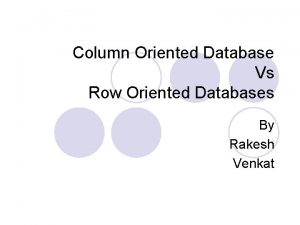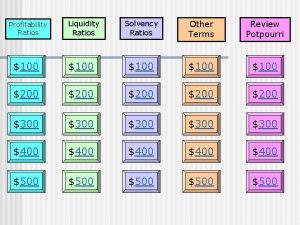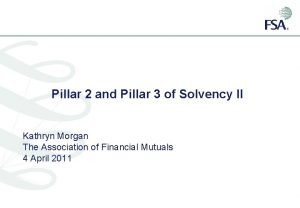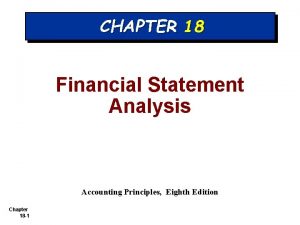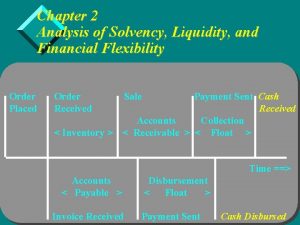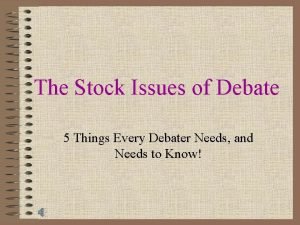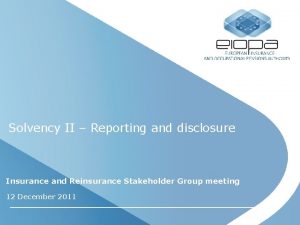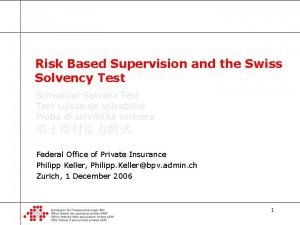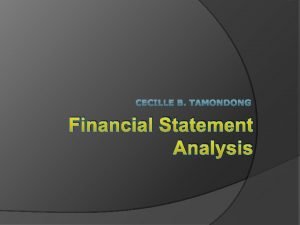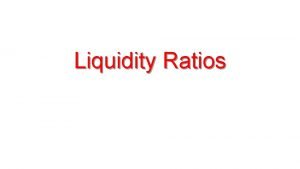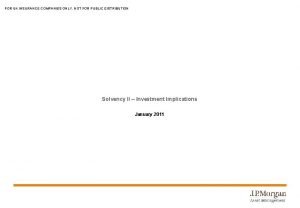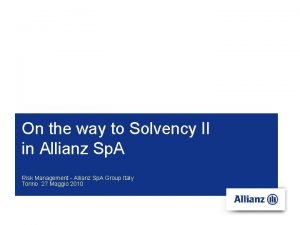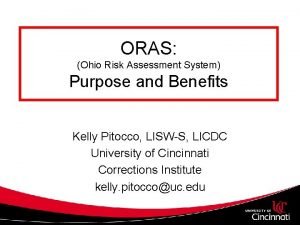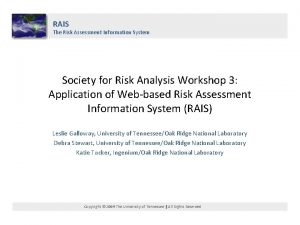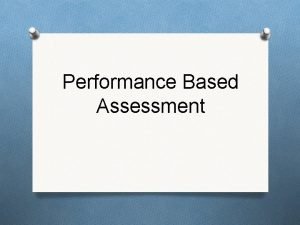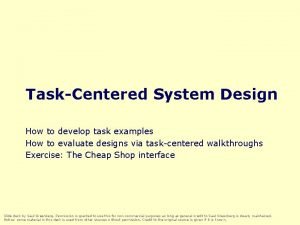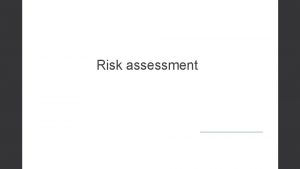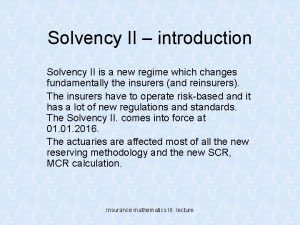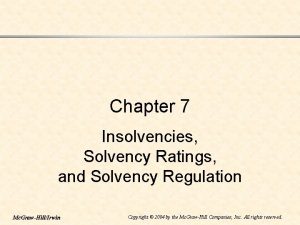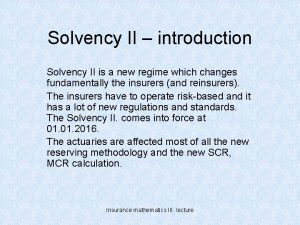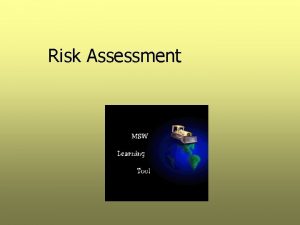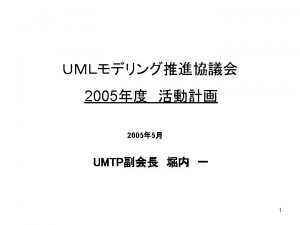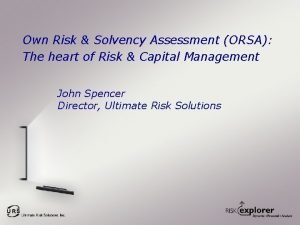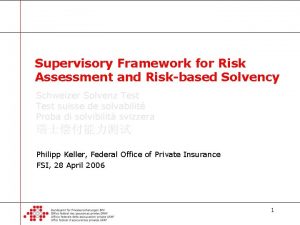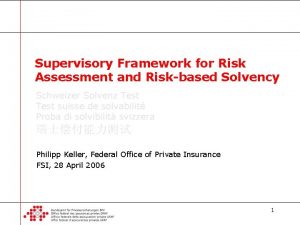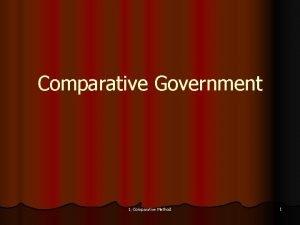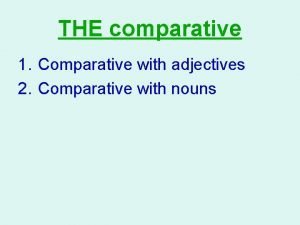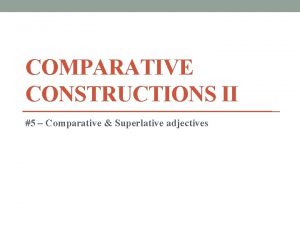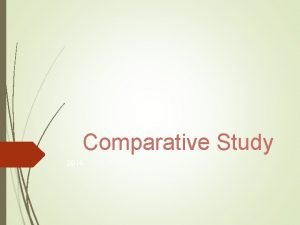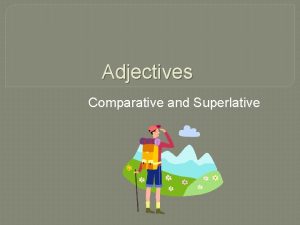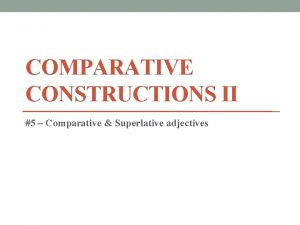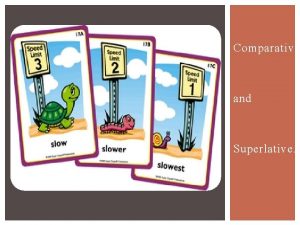China Risk Oriented Solvency System A Comparative Assessment


































- Slides: 34

China Risk Oriented Solvency System*: A Comparative Assessment and a Study of its Impacts on the Life Insurance Industry (based on two forthcoming papers published in The Geneva Papers on Risk and Insurance) Derrick W. H. FUNG, Hang Seng management College David G. D. JOU, Taikang Life Insurance Company Ai Ju SHAO, Ming Chuan University Jason J. H. YEH, The Chinese University of Hong Kong http: //rdcu. be/rc. Cp (C-ROSS: A Comparative Assessment with Other Risk-Based Supervisory Frameworks) http: //rdcu. be/v. YMr (The Implications of the China Risk-Oriented Solvency System on the Life Insurance Market) * C-ROSS Introduction by Blanca Qin (FCAS) of Guy Carpenter

Insurance Industry in China n In 2016, insurance companies in China wrote USD 466 billion in premiums, with life insurance accounting for 56. 2% and non-life for 43. 8%. Life insurance recorded a 24. 6% increase and non-life insurance increased by 15. 8%. n On average 4. 15% of GDP or US$337 per capita was spent on insurance in China. This is much lower than the average of 8. 00% of GDP or US$3, 505 per capital in the advanced markets. (Source: Swiss Re, Sigma, No. 3/2017) n (2019 update) On average 4. 30% of GDP or US$430 per capita was spent on insurance in China. This is much lower than the average of 7. 23% of GDP or US$818 per capita in the world. (Source: Swiss Re, Sigma, No. 4/2020)

Total premium volume in USD in 2016 Ranking Economy 1 United States 2 3 4 5 6 7 8 9 10 18 24 -3 Premium volume (in millions of USD) 2016 $1, 352, 385 Japan 471, 295 PR China 466, 131 United Kingdom 304, 208 France 237, 644 Germany 215, 021 South Korea 170, 862 Italy 162, 383 Canada 114, 523 Taiwan 101, 445 Hong Kong 56, 448 Change (in %) nominal (in USD) 2. 6% 5. 1 20. 6 -7. 5 -0. 2 3. 6 -3. 2 0. 1 5. 7 23. 4 Share of world market 2016 (in %) 28. 58% 9. 96 9. 85 6. 43 5. 02 4. 54 3. 61 3. 43 2. 42 2. 14 1. 19 24 -3

Life insurance premium volume in USD in 2016 Ranking 1 2 3 4 5 6 7 8 9 10 14 24 -4 Economy United States Japan PR China United Kingdom France Italy South Korea Germany Taiwan India Hong Kong Premium volume (in millions of USD) 2016 $558, 847 354, 053 262, 616 199, 369 152, 817 122, 438 104, 169 94, 661 84, 493 61, 817 51, 940 Change (in %) nominal (in USD) Share of world market 2016 (in %) 0. 7% 3. 9 24. 6 -8. 7 -0. 9 -4. 0 2. 8 21. 35% 13. 53 10. 03 7. 62 5. 84 4. 68 3. 98 -1. 8 3. 62 6. 1 10. 3 25. 9 3. 23 2. 36 1. 98 24 -4

Non-life insurance premium volume in USD in 2016 Premium volume (in millions of USD) 2016 Ranking Economy 1 2 3 4 5 6 7 8 9 10 16 41 United States PR China Germany Japan United Kingdom France South Korea Canada Netherlands Australia Taiwan Hong Kong 24 -5 $793, 538 203, 515 120, 360 117, 243 104, 839 84, 826 66, 694 64, 547 63, 746 44, 467 16, 952 4, 508 Change (in %) nominal (in USD) 3. 9% 15. 8 1. 9 8. 8 -5. 1 1. 2 4. 8 -0. 4 0. 5 2. 6 3. 7 0. 3 Share of world market 2016 (in %) 37. 52% 9. 62 5. 69 5. 54 4. 96 4. 01 3. 15 3. 01 2. 10 0. 80 0. 21 24 -5

Macroeconomic indicators in 2016 Ranking Economy 1 2 3 4 5 6 7 8 9 10 23 33 24 -6 United States PR China Japan Germany United Kingdom France India Italy Brazil Canada Taiwan Hong Kong Population (millions) GDP (billion USD) 324. 0 1, 382. 9 126. 3 82. 6 65. 7 66. 9 1, 328. 8 61. 0 209. 8 36. 2 23. 5 7. 4 $18, 503 11, 234 4, 954 3, 460 2, 629 2, 461 2, 272 1, 852 1, 798 1, 529 507 320 GDP per capita (thousand USD) $57. 1 8. 1 39. 2 41. 9 40. 0 36. 8 1. 7 30. 4 8. 6 42. 2 21. 6 43. 2 24 -6

Insurance density: premiums per capita in USD in 2016 Ranking Economy 1 2 3 4 5 6 7 8 9 10 47 24 -7 722 Total business Cayman Islands $12, 160 Hong Kong 7, 679 Switzerland 6, 934 Denmark 5, 159 Finland 5, 061 Netherlands 4, 717 Luxembourg 4, 589 Ireland 4, 408 Taiwan United States PR China 4, 174 337 Life business Non-life business $ 596 7, 066 3, 700 3, 742 4, 106 965 2, 631 3, 640 4, 321 $11, 565 613 3, 233 1, 416 955 3, 752 1, 958 769 3, 599 1, 725 190 2, 449 147 24 -7

Insurance penetration: premiums in % of GDP in 2016 Ranking Economy 24 -8 1 2 3 4 5 6 7 8 9 10 Cayman Islands Taiwan Hong Kong South Africa South Korea Finland Netherlands United Kingdom Denmark Japan 39 PR China Total business Life business Non-life business 22. 6% 20. 0 17. 6 14. 3 12. 1 11. 8 10. 4 10. 2 9. 6 9. 5 1. 1% 16. 7 16. 2 11. 5 7. 4 9. 5 2. 1 7. 6 7. 0 7. 2 21. 5% 3. 3 1. 4 2. 7 4. 7 2. 2 8. 3 2. 6 2. 4 4. 2 2. 3 1. 8 24 -8

• C-ROSS: An Overview • Comparative Assessment of C-ROSS with RBC, Solvency II and SST • Impact of C-ROSS on the Life Insurance Industry

C-ROSS: An Overview April 2012 CIRC launched a project to establish a risk-oriented regulatory framework, now known as C-ROSS. February 2015 CIRC published 17 solvency regulatory rules of C-ROSS May 2013 CIRC published the conceptual framework of CROSS January 2016 Full implementation of C-ROSS February to December 2015 Transitional implementation of C-ROSS

C-ROSS: An Overview Pillar I Quantitative Capital Requirements • No. 1: Actual Capital • No. 2: Minimum Capital • No. 3: Life Insurance Policy Liability Valuation • No. 4: Minimum Capital for Insurance Risk (Non. Life) • No. 5: Minimum Capital for Insurance Risk (Life) • No. 6: Minimum Capital for Insurance Risk (Reinsurance) • No. 7: Minimum Capital for Market Risk • No. 8: Minimum Capital for Credit Risk • No. 9: Stress Test Pillar II Qualitative Supervisory Requirements • No. 10: Integrated Risk Rating (Classified Supervision) • No. 11: Solvency Aligned RIsk Management Requirements and Assessment • No. 12: Liquidity Risk No. 16: Solvency Assessment Report Pillar III Market Discipline Mechanism • No. 13: Public Disclosure of Solvency Information • No. 14: Exchange of Solvency Information • No. 15: Credit Rating of Insurance Company No. 17: Insurance Group

Pillar I Quantitative Capital Requirements Pillar I quantifies capital requirements for insurance risk, market risk and credit risk, with allowance for diversification effect and loss sharing with policyholders. • No. 1: Actual Capital • No. 2: Minimum Capital • No. 3: Life Insurance Policy Liability Valuation Solvency • No. 4: Minimum Capital for Insurance Risk (Non-Life) • No. 5: Minimum Capital for Insurance Risk (Life) Market Risk • No. 6: Minimum Capital for Insurance Risk (Reinsurance) Interest Rate • No. 7: Minimum Risk Capital for Market Risk • No. 8: Minimum Equity Risk Capital for Credit Risk • No. 9: Stress Test Real Estate Risk Foreign Investment Risk Exchange Rate Risk Diversification Actual Capital Ratio = Minimum Required Capital Credit Risk Spread Risk Default Risk Diversificatio n x 100% Insurance Risk Diversificatio n Life Insurance Risk Loss Risk Lapse Risk Expense Risk Diversification Non-Life Insurance Risk Control Risk (Refer to SARMRA in Pillar II) Loss Absorptio n Mortality Risk Catastrophic Risk Longevity Risk Morbidity Risk Medical and Health Claim Risk Diversification

Pillar I Quantitative Capital Requirements • No. 1: Actual Capital • No. 2: Minimum Capital • No. 3: Life Insurance Policy Liability Valuation • No. 4: Minimum Capital for Insurance Risk (Non-Life) • No. 5: Minimum Capital for Insurance Risk (Life) • No. 6: Minimum Capital for Insurance Risk (Reinsurance) • No. 7: Minimum Capital for Market Risk • No. 8: Minimum Capital for Credit Risk • No. 9: Stress Test Pillar I classifies admissible capital into four categories. Category Seniority Example Limit Core Capital – Tier 1 1 Common Shares None Core Capital – Tier 2 2 Preferred Shares Less than 30% of total core capital Supplementary Capital – Tier 1 3 Sub-ordinated loans with maturity more than 5 years Supplementary Capital – Tier 2 4 Sub-ordinated loans with maturity less than 5 years • • Total supplementary capital should be less than 100% of total core capital Supplementary capital – tier 2 should be less than 25% of total core capital

Pillar I Quantitative Capital Requirements • No. 1: Actual Capital • No. 2: Minimum Capital • No. 3: Life Insurance Policy Liability Valuation • No. 4: Minimum Capital for Insurance Risk (Non-Life) • No. 5: Minimum Capital for Insurance Risk (Life) • No. 6: Minimum Capital for Insurance Risk (Reinsurance) • No. 7: Minimum Capital for Market Risk • No. 8: Minimum Capital for Credit Risk • No. 9: Stress Test Pillar I defines admissible assets and method of liability valuation Assets Liabilities Admissible Assets Liabilities Cash and cash equivalents Deposits Bonds Equities Trust and mutual funds Asset-backed securities Real properties Derivatives Reinvestment assets Accounts receivable Equity stake in subsidiaries Other tangible assets Best estimated reserve (actuarial present value of future cash flow + time value of options and guarantees) + Risk margin (difference in actuarial present value of future cash flow under the base scenario and adverse scenario, with parameters in adverse scenario specified by CIRC) Inadmissible Assets Valuation interest rate Intangible assets Deferred tax assets due to operating loss Deferred acquisition costs Assets with restricted access Reference to 750 days moving average of China government bond yield, with 4. 5% as the ultimate long term yield for duration longer than 40 years.

Pillar I Quantitative Capital Requirements • No. 1: Actual Capital • No. 2: Minimum Capital • No. 3: Life Insurance Policy Liability Valuation • No. 4: Minimum Capital for Insurance Risk (Non-Life) • No. 5: Minimum Capital for Insurance Risk (Life) • No. 6: Minimum Capital for Insurance Risk (Reinsurance) • No. 7: Minimum Capital for Market Risk • No. 8: Minimum Capital for Credit Risk • No. 9: Stress Test Comparison of changes in assets, liabilities and capital between C-ROSS and the former factor-based solvency system

Pillar II Qualitative Pillar II: Solvency aligned risk management requirements and Supervisory Requirements assessment (SARMRA) • No. 10: Integrated Risk Rating (Classified Supervision) Actual Capital Solvency Ratio x 100% Control Risk • No. 11: Solvency Minimum Required Aligned RIsk Management Capital Requirements and Assessment Risk Loss • No. 12: Liquidity Insurance Diversificatio Credit Risk Market Risk Absorptio Risk = n n Quantifiable Risk CIRC assesses the quality of an insurer’s risk management on insurance risk, market risk, credit risk, operational risk, strategic risk, reputational risk, liquidity risk, and solvency risk. A rating is assigned to each insurer after assessment. Capital for control risk = Capital for quantifiable risk x Risk factor (Risk factor ranges from -0. 1 to 0. 4, depending on assessment results of SARMRA)

Pillar II Qualitative Supervisory Requirements • No. 10: Integrated Risk Rating (Classified Supervision) • No. 11: Solvency Aligned RIsk Management Requirements and Assessment • No. 12: Liquidity Risk Pillar II: Integrated Risk Rating (IRR) • Operational risk, strategic risk, reputational risk and liquidity risk are difficult to quantify • CIRC assesses these four types of risk qualitatively • The assessment results for non-quantifiable risks (i. e. operational risk, strategic risk, reputational risk and liquidity risk) together with quantifiable risks and control risks form the basis of IRR Category Solvency Ratio Operational risk, strategic risk, reputational risk and liquidity risk Regulatory Effort and Intervention Type A Insurer Sufficient And Mild Small Type B Insurer Sufficient And Moderate Type C Insurer In-sufficient Or Significant Type D Insurer In-sufficient Or Severe Very significant

Pillar III Market Discipline Mechanism • No. 13: Public Disclosure of Solvency Information • No. 14: Exchange of Solvency Information • No. 15: Credit Rating of Insurance Company Pillar III: Disclosure and Exchange of Information • Transparency of insurers’ solvency position is enhanced under C-ROSS • Insurers have to disclose their financial position by uploading the extract of solvency assessment reports on their websites on a quarterly basis • The reports contain information about insurers’ solvency ratio, net profit, net asset, minimum required capital, IRR result, CIRC’s assessment result on risk management, liquidity risk, and any interventionary actions imposed by CIRC • Information about insurers’ solvency ratio and IRR result have to be disclosed in documents to policyholders, such as application notice, annual statements, etc. • Exchange of information with stakeholders is also enhanced by regular seminars, press conference and interviews held by CIRC with credit rating agencies, industry analysts, and research institutions.

Pillar III Market Discipline Mechanism • No. 13: Public Disclosure of Solvency Information • No. 14: Exchange of Solvency Information • No. 15: Credit Rating of Insurance Company n Information disclosed by insurers are centralized in the following website maintained by the Insurance Association of China: http: //icid. iachina. cn/ICID/

• C-ROSS: An Overview • Comparative Assessment of C-ROSS with RBC, Solvency II and SST • Impact of C-ROSS on the Life Insurance Industry


Highlights n Internal and stochastic models, which generally have greater predictive power and risk-sensitivity, are not operated under CROSS due to the limited availability of resources in the industry. n The centralized political power at CIRC facilitates active qualitative supervision on insurers and enhances flexible adjustments to the framework for the fast changing financial market. n The exclusion of residual margin as liability results in the possibility of negative reserve because all the future profits are recognized at policy inception.


• C-ROSS: An Overview • Comparative Assessment of C-ROSS with RBC, Solvency II and SST • Impact of C-ROSS on the Life Insurance Industry

Traditional large life insurers Bancassurance -oriented life insurers Bank. Other life holding life insurers Total Solvency ratio under Solvency I 261% 251% 333% 346% 267% Solvency ratio under C-ROSS 283% 143% 287% 322% 265% % change +22% -108% -46% -24% -2% ROE in 2016 4. 6% -2. 7% 1. 6% 1. 7% 3. 7% • On an aggregate basis, life insurers’ solvency ratio does not change materially under C-ROSS. • Life insurers focusing on writing long-term traditional life policies have improved solvency ratio under C-ROSS • Life insurers focusing on writing short-term high cash value products have deteriorated solvency ratio under C-ROSS

n Writing short-term high cash value products is capital consuming. n Writing long-term traditional life products with heavy protection elements can contribute excess capital. n After C-ROSS implementation, the percentage of investment-related premiums written by bancassurance-oriented life insurers drops from 76. 63% in 2015 to 66. 84% in 2016.

n Required capital for market risk is more than 3 times the required capital for insurance risk and more than 6 times the required capital for credit risk. n Life insurers focusing on issuing short term endowments and high cash value products enjoy less diversification benefits and loss absorption when calculating the minimum required capital.

Minimum required capital for interest rate risk = Surplus in base scenario – Surplus in adverse scenario Capital n In adverse scenario, a decrease in interest rate only increases liabilities as well as assets classified as AFS, but not assets classified as HTM. n This gives life insurers incentive to re-classify their HTM assets to AFS so as to lower the minimum required capital for interest rate risk. n The solvency ratio for our sub-sample increases from 257% to 289% if the proportion of AFS investments doubles from 17. 9% to 35. 8%. HTM Assets (reported at amortized cost) Liabilities AFS Assets (reported at fair value)

n Shortening asset-liability duration gap also reduces minimum required capital for interest rate risk. n However, life insurers in China face many practical difficulties in matching asset and liability duration because: Ø Ø it is difficult to find corporate bonds in China that have maturity over 10 years to match the duration of liabilities foreign exchange control and exchange rate risk pose extra difficulties for insurers to trade long term bond overseas as China’s financial market is still developing, use of interest rate swap to manage duration gap is also extremely expensive decreasing liability duration by selling short term products may be inconsistent with insurer’s strategic plan

n Additional to considering the expected returns and volatilities of equities, life insurers under C-ROSS also have to consider the effect of equity investments on their solvency ratios.

Effects of low interest rate environment We use 30 September 2015 as the base date and assume that the n yields of China government bonds with maturity less than 20 years decrease to 2%, and then gradually increase to the ultimate yield of 4. 5% for maturity between 20 years and 40 years. Solvency ratio in base scenario Solvency ratio in Changes adverse scenario Traditional large life insurers 273% 104% -168% Bancassurance-oriented life insurers 148% 93% -55% Bank-holding life insurers 242% 139% -103% Total 259% 105% -154%

Effects of stock market boom n During stock market boom, the surplus increases at a slower rate than that of minimum required capital for market risk due to the pro-cyclical components embedded. Effect of Equity Market on a Typical Life Insurer’s Solvency Ratio 350% MC: minimum capital for equity risk 300% EX: exposure in equity Solvency Ratio 250% rf: risk factor depending on stock market k 1: risk factor depending on the square of 200% unrealized gain -100% Base 302% -80% -60% -40% -20% 0% 20% Changes in Equity Market An example: 100 * 0. 41 * (1+1) = 82 40% 60% 80% 100%

Conclusion n C-ROSS is more sophisticated than RBC, and not inferior to Solvency II and SST. n Life insurers specialized in writing long term traditional life products have improved solvency ratio under C-ROSS, but are also more vulnerable to decreases in interest rates. n Capital requirements for interest rate risk and equity risk motivate life insurers to take into account duration matching, accounting classification of fixed-income assets, and the underlying risks of equity investment when formulating their investment strategies. n Stock market boom has a slightly negative effect on insurers’ solvency ratio due to the pro-cyclical component embedded in the minimum required capital

Thank You for Your Attention Q&A
 Risk margin solvency ii
Risk margin solvency ii Credit risk market risk operational risk
Credit risk market risk operational risk Trade oriented sales promotion
Trade oriented sales promotion Row oriented vs column oriented database
Row oriented vs column oriented database Short term risk
Short term risk Liquidity solvency and profitability ratios
Liquidity solvency and profitability ratios Solvency ii pillar 3
Solvency ii pillar 3 Citrus plus chapter 18
Citrus plus chapter 18 Solvency ratios
Solvency ratios Solvency ii ania
Solvency ii ania Define liquidity financial flexibility and solvency
Define liquidity financial flexibility and solvency Liquidity profitability and solvency
Liquidity profitability and solvency Inherency debate definition
Inherency debate definition Solvency ii rsr reporting
Solvency ii rsr reporting Swiss solvency test
Swiss solvency test Solvency forecasting method
Solvency forecasting method Solvency investopedia
Solvency investopedia Solvency ii
Solvency ii Liquidity ratios
Liquidity ratios Solvency ii ppt
Solvency ii ppt Allianz solvency ii
Allianz solvency ii Solvency ii pillar 3 reporting templates
Solvency ii pillar 3 reporting templates Oras scoring guide
Oras scoring guide Rais toxicity
Rais toxicity Example of product oriented learning competencies
Example of product oriented learning competencies What is performance-based assessment
What is performance-based assessment Slidetodoc
Slidetodoc Process oriented performance-based assessment
Process oriented performance-based assessment Comparative development experiences of india and china
Comparative development experiences of india and china Risk projection in software engineering
Risk projection in software engineering Avoidance risk
Avoidance risk Relative risk calculation
Relative risk calculation Residual risk and secondary risk pmp
Residual risk and secondary risk pmp Inherent risk vs control risk
Inherent risk vs control risk Absolute risk vs relative risk
Absolute risk vs relative risk



